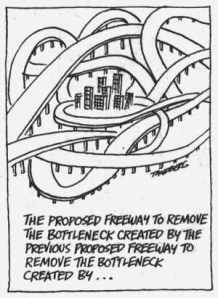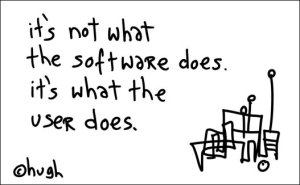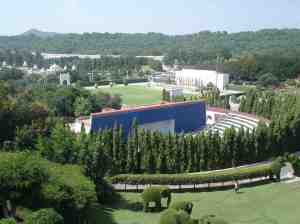This was the article I had written when the first experiment on LHC was suspended in 2008 at CERN, Geneva.
THE LARGE HADRON COLLIDER EXPERIMENT: IS D-DAY DEFERRED?
In recent memory no scientific experiment has created as much excitement and consternation as the Large Hadron Collider (LHC) experiment in CERN, Geneva. The awe-inspiring anticipation that the secret to the creation of matter and the universe is finally to be unraveled has kept one group waiting with bated breaths for the outcome of this experiment.
Science has always reserved for itself the unique benefit of generating technological thrills for the benefit of mankind. While mechanical contraptions and electrical and electronic devices ruled the roost till the turn of 21st century, rapid advances in nanotechnology, microbiology, superconductivity and other areas of science promise to expand the horizons of comfort in our daily lives. In the light of such appealing good times ahead, the sudden appearance of news that the CERN experiment could possibly spell the end of earth came like a bolt from the blue and certainly put the scare into some folks.
What is the experiment all about? How much of the information is true? What can we expect from this endeavour? These are some of the questions the present article attempts to briefly address. Perhaps at the end of it, the discerning reader could decide if we really need to fear the outcome of this experiment.
What is the experiment about?
The LHC experiment is basically designed to replicate the situation that existed about a billionth of a second after the Big Bang took place. This was the time frame which signaled the origin of material universe and the fundamental forces that govern its dynamics. Though Newton’s laws on how gravity acts on mass have been around for some time now, there is still no plausible quantum theory of gravity to explain how mass itself was generated. Moreover, Vera Rubin and Kent Ford’s work at the Kitt National Observatory in Arizona, USA, laid the foundation for the discovery of “dark matter”, which cannot be seen in the conventional sense, and yet pervades close to 60% of this universe. Extensions of the currently prevailing “Standard Model” accommodate the dark matter in the form of Supersymmetry and String theories. According to these current theories, particles acquire their mass through interactions with an all-pervasive field called the Higgs field. Though this field is supposed to be everywhere and at the bottom of all matter, it has still remained elusive to the probing science of man. This is one reason why the Higgs Boson, which carries this Higgs Field, is dubbed “God’s particle.” The LHC experiment seeks to find this mysterious particle and many other particles called “super-partners” of many of the known particles, some of which could serve as dark matter candidates and hence seek answers to the origin of universe and dark matter.
How is it being done?
The Large Hadron Collider (LHC) at CERN is a mammoth machine that is the culmination of 20 years of single pointed attention of scientists, engineers and technicians. It is also the most complex machine ever built by man. The CERN website lists some astounding statistics about this complex instrument. With a circumference just less than 27 km, and straddling the French and Swiss territories, it nestles more than 100 m underground. At full power, the LHC will accelerate protons to 99.9% the speed of light, which loosely means that under the same conditions existing in the collider, they could rotate around the earth about 700 times by the time we blink our eyes once. Imparting an energy of 7 TeV to each proton (CERN reminds us that this energy is about the same possessed by a mosquito in flight!), they will induce trillions of such protons to race around the cavity of the collider in a beam that is about as thick as a strand of hair. Zipping around at such dizzying speeds in a cavity that is maintained at a temperature comparable to that of outer space (about -270 degree Centigrade – comparably, the coldest recorded temperature on earth is -89 degree Centigrade at the Russian Vostok station in Antarctica) they would then smash into each other creating temperatures more than 100 000 times hotter than the heart of the sun! It is in these extreme conditions that scientist hope to find the Higgs Boson and answer several critical questions about the origin of matter.
On September 10th, the day feared by some as the D-day that would end the world, CERN successfully steered the first beam of protons fully around the entire accelerator cavity. The plan was to first spend the first few weeks in helping the CERN scientists, engineers and technicians to gain experience and get used to this complex machine. It was only later that the accelerator systems were to be systematically brought into play to ramp up the protons to terrific speeds that would finally culminate in their collisions. However, on September 19th, a large quantity of helium (used to keep the superconducting coils of the magnets cooled) leaked into the main tunnel, forcing the scientists to temporarily shut down the system. After diagnostics and repairs, the LHC is expected to be run again only around April 2009.
There were many who heaved a sigh of relief on knowing that the feared D-day was deferred. They even considered it ‘divine intervention.’ But really, is it true that D-day is deferred?
How true are the fears associated with this experiment?
Contrary to the majority group that is keenly awaiting the results of the CERN experiment, there is a small section of people forming a minority which fears that this experiment is soon to blow them to kingdom come. There are several fears that have been vociferously voiced by this small group of concerned people. From court cases in the USA and Europe to a traumatized teenager’s suicide in Bhopal, India, the reactions were varied, and at times bizarre. So much so that on the morning of September 11, the world was so engrossed in discovering if a 27 km long tunnel had set off the end of the world that the anniversary of the twin tower bombings found only a fleeting mention among most media. While some of the fears pertain to technicalities that are beyond the scope of this general article, two of these are worth discussing- the cosmic rays and the mini black holes.
Several highly energetic charged particles like electrons, protons and some other nuclei are produced in certain astronomical environments. These constitute the cosmic rays and are so energetic that they can easily pass through many inches of lead. However earth’s atmosphere shields us from these rays, which have actually been hitting the earth since its formation. It is true that cosmic rays will be reproduced in the LHC experiment at CERN. However, the point to note is that cosmic rays far more energetic than these have been hitting the earth for several millennia and the earth has still survived without being destroyed. Therefore there are no grounds to fear that cosmic rays produced at CERN will eat the earth up from inside as some have feared.
Black holes are formed in space when an object much more massive than the sun collapses into itself, thus concentrating a huge amount of mass into a very small volume. This enormous density of matter creates such exceptional force of gravitational pull that everything in the vicinity of such an entity gets pulled into it. It is speculated that even light cannot escape this almighty grab and that is why these entities remain black, hence giving them the name “black holes.” It may be pointed out that the famous Chandrasekhar limit is associated with the theory of black hole formation. Black holes constitute a part of what we call as “dark matter” in the Universe. While scientists at CERN have used well established physics laws to prove that microscopic black holes cannot form inside the LHC, the obvious point to note is that there is just not enough mass to even initiate the formation of black holes. Also, the near instant disintegration of particles formed in the LHC ensures that matter does not stay long enough to accumulate or to form a mini black hole in the cavity of LHC.
It is perhaps in anticipation of such concerns that CERN instituted a study as far back as 2003 to prepare a safety report. The LHC Safety Assessment Group (LSAG) report allays most of the fears and concerns regarding the LHC experiment and is available for public view at http://cern.ch/lsag/LSAG-Report.pdf.
What can we expect from the experiment?
The LHC machine is the culmination of perhaps every technology and science known to man. As can be expected, it is bound to face several glitches and obstacles along the way. The helium leak due to a faulty electrical circuit is perhaps only the first one among several others lurking around the corner. A case in study is the recent hacking of the CERN computers that control several complicated systems in the LHC. Thomas Alva Edison is said to have tried out thousands of experiments before he perfected the simple storage battery. If every failure were to bring in despondency and despair, then science would never have progressed. It is only because impediments were treated as schools to learn from, that great inventions and discoveries saw the light of day.
While the analysis of the data and conclusive results from the LHC experiment are more than a year away, what can be looked upon with interest is the spin-off of the vast technological marvels that this project created. Especially for a country like India where there is a vast pool of technical and scientific manpower, such an opportunity would help in gaining hands-on experience with some of the best minds in the field. Close to 200 Indian scientists from TIFR, BARC, SINP, IUAC and several Indian Universities are involved in various groups that run this experiment, and are bound to bring back with them a rich and new experience. Such focused interplay between man and machine calls for close interaction and cooperation, and is only bound to herald the dawn of a new world of Physics in which India too can play a dominant role. While there is enough reason for grouse for missing the industrial revolution, India could perhaps be standing on the threshold of a new era in understanding how nature works. All it requires is for us to throw aside our fears and misconceptions, and summon the courage to explore the opening frontiers.








 ouglas Everett’s quote would perhaps form the best prelude to this blog post I am going to make: ““
ouglas Everett’s quote would perhaps form the best prelude to this blog post I am going to make: ““

 This morning began with total pandemonium in our house. In retrospect, the cat responsible for the hullabaloo must have had no clue as to the sensation it would create that day.
This morning began with total pandemonium in our house. In retrospect, the cat responsible for the hullabaloo must have had no clue as to the sensation it would create that day.